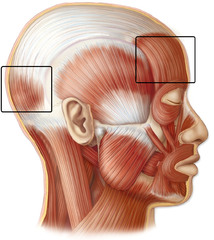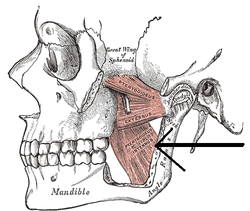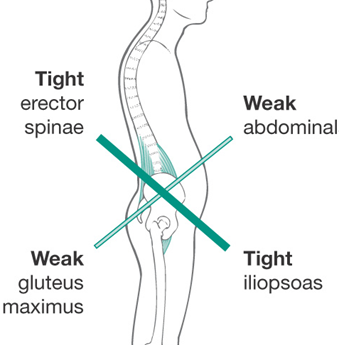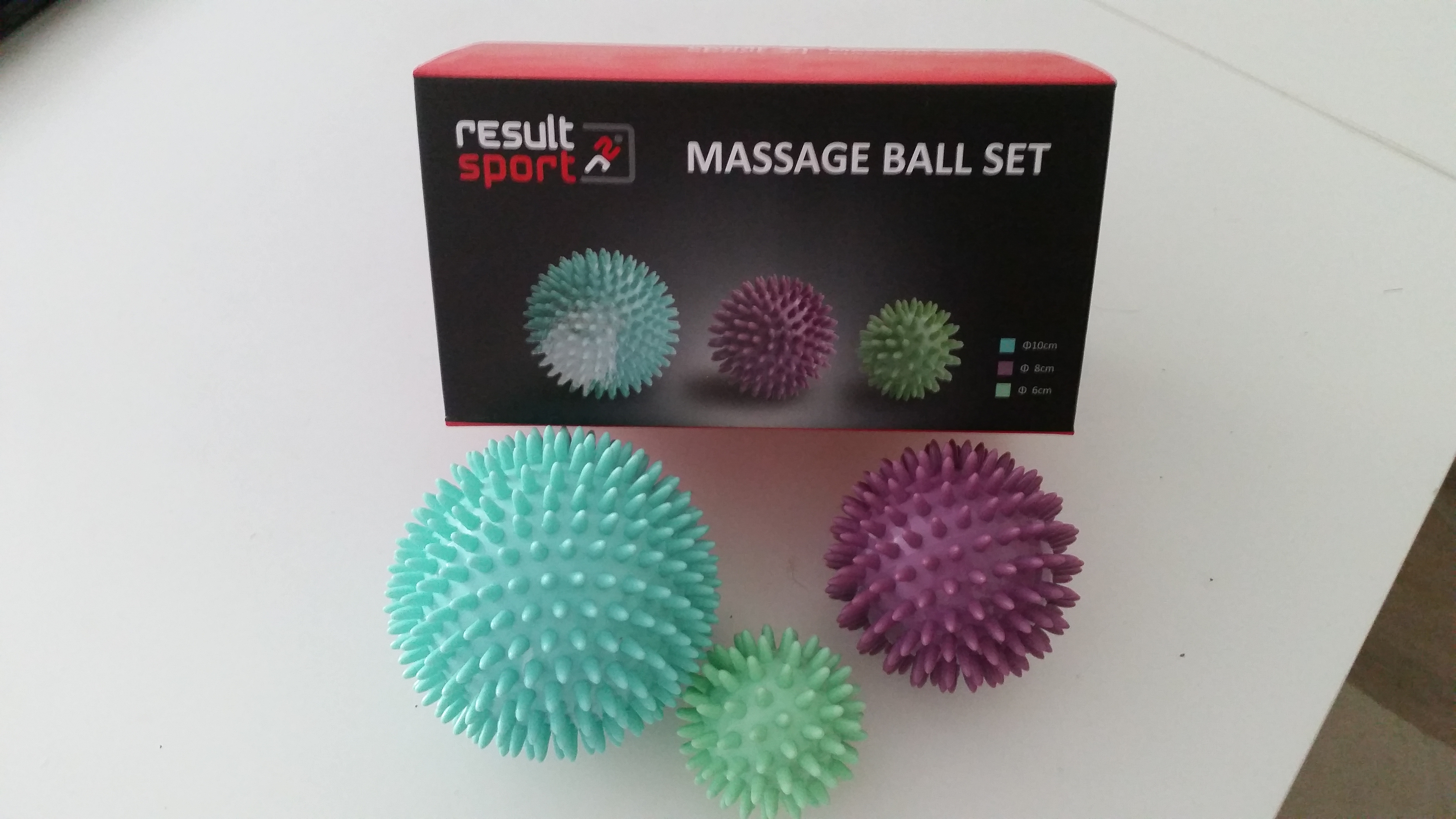How can osteopaths treat the head and face? What structures can osteopaths target in the face in order to help with problems?
Well – osteopaths work with all skeletal muscles if required, and the head and face is no exception.
Some examples include:
Example 1: Treating the occipitofrontalis muscle to alleviate headaches that can be caused by (or contributed to by) the chronic tightening of this muscle (tension headaches):
Alongside treating the occipitofrontalis muscle, an osteopath would also apply soft tissue techniques to muscles in the neck to help with releasing muscular tension around the area. This tends to work very well in relieving the symptoms of a tension headache, as some of the nerves that supply areas of the head can be impinged by tight neck muscles. For example, sub-occipital muscles impinging on the greater auricular nerve and contributing to or causing cervicogenic headaches.
Example 2: Treating the temporalis, masseter, and pterygoid muscles in instances of dysfunction of the jaw or jaw joint:
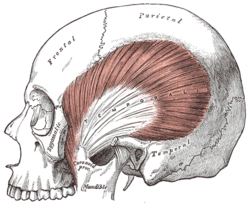
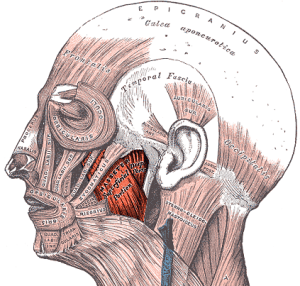
In cases of temporomandibular joint dysfunction (can be referred to as clicking jaw) – treating into these muscles can have a fantastic therapeutic effect. Along with the muscles pictured above an osteopath might treat overactive pterygoid muscles with inhibition. These are located deeper than the masseter and are accessed intra-orally (from inside the mouth) using gloves and with the patient’s express consent. The pterygoids are pictured below:
The pterygoid muscles are attached to the jaw joint itself (temporomandibular joint) and directly affect how this joint functions – the motion of the disc within this joint. Temporomandibular joint dysufnction is often referred to as myofascial pain disorder and can result in a clicking jaw, pain on eating and otherwise using the jaw. The condition usually improves within a few months, but during this time this disorder can negatively impact quality of life – and osteopathic treatment can reduce the discomfort and recovery time. The NHS choices website supports referral to a manual therapist in the first instance, and if conservative treatment for temporomandibular disorder fails, a referral for a surgical opinion can be considered by your GP. Coming to see an osteopath for this problem does not require a referral and bypasses the waiting list time for an NHS physiotherapist. If you would like to know more about potential treatments for issues of the head, face and neck do not hesitate and get in contact today.
